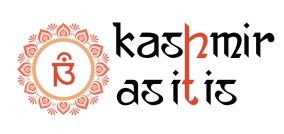by Kapil Bhat
Having been born in 1982 and the  mere eight years spent in the motherland, I have very faint memories of days spent in the valley. As what I recollect the life in my village (small one with 14 pandit families in Anantnag) life was simple with plenty of activities both in social and religious spheres that added color to it.
mere eight years spent in the motherland, I have very faint memories of days spent in the valley. As what I recollect the life in my village (small one with 14 pandit families in Anantnag) life was simple with plenty of activities both in social and religious spheres that added color to it.
Festivals were part of our culture which were celebrated by all with lots of enthusiasm and fervor. Kaawe Punim is one of such festival which I very vividly remember of celebrating both pre and post exodus.
Kaawe Punim is observed on Full moon day of lunar month of Magha (mid-February). On the day each household prepares a square shaped structure of two sticks (3-4 Ft & 1-2 Ft each) with paddy hay used to hold the sticks together in a manner to be able to hold cooked yellow rice (taher) over it. The structure then with tehar over it is kept on a window pane specially made to feed the birds each.  The yellow rice therefore offered for the consumption of crows. A small melodious rhyme is sung while performing the ritual. It is
The yellow rice therefore offered for the consumption of crows. A small melodious rhyme is sung while performing the ritual. It is
“ Kaw batta Kawo, khe saeri kawo kaw ta kaewin saeti hyeth.
Walaba sane nave lare, varey bata khe”
“O” clever crow
“O” the lover of khichri crow
Come to over new house
Along with your loved one
Be seated on our roof
Enjoy your share of Taher
The festival signifies the love and care about other creatures that out culture emphasizes. Hoonye myett the practice of leaving a portion of rice to be consumed by the stray dogs is another such example of generosity towards the animals.
However, the exodus from the homeland  has forced us to think about the future of the rituals and festivals. Life in metros and suburban where most of us are settled makes it difficult for us to follow many of our age old rituals that added to the richness of our culture. The way forward is to make a resolve to celebrate all the festivals involving all generations to ensure the legacy is passed on to the next generation who have to be flag bearers to ensure our survival as a community in coming years. The KP associations world over can play a very critical role. The onus is on us that if the culture is lost, the identity is lost. Celebrating the festivals with the younger ones will go in a long way in preserving our culture and identity.
has forced us to think about the future of the rituals and festivals. Life in metros and suburban where most of us are settled makes it difficult for us to follow many of our age old rituals that added to the richness of our culture. The way forward is to make a resolve to celebrate all the festivals involving all generations to ensure the legacy is passed on to the next generation who have to be flag bearers to ensure our survival as a community in coming years. The KP associations world over can play a very critical role. The onus is on us that if the culture is lost, the identity is lost. Celebrating the festivals with the younger ones will go in a long way in preserving our culture and identity.
Disclaimer – KAII does not hold the responsibility for the authenticity of this article. The writer/author of this writeup is responsible for the content displayed. If anyone has any objections, please raise it immediately to admin@kashmirasitis.com with valid reasons.




